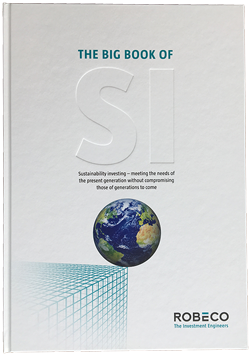Sizzling summers are forcing cities across Europe to come up with smarter ways of managing their resources. No more so than in Barcelona where drought has triggered a complete reinvention of its urban services.
The Christopher Columbus monument that overlooks Barcelona’s port is a reminder of this city’s rich history in daring to do things differently. Columbus was certain there was a quicker route to the spice trade in Asia. After having his plans rejected by several monarchs, eventually Queen Isabella and King Ferdinand of Spain agreed to fund the expedition to sail west in search of an alternative route.
Of course Columbus didn’t reach Asia, he discovered America instead (not that you would know from the statue which for reasons unknown has him pointing in the direction of Libya, not the US). Sense of direction aside, this is a city that is clear on one thing; it wants to move forward. Take for example its response to recession in the 1980s. Barcelona’s traditional manufacturing industry was near collapse and unemployment was widespread, drastic changes needed to be made.
Add to this the fact that five years earlier, Francisco Franco the fascist who had ruled for four decades had died, and it was clear that a unique opportunity to fundamentally reshape the political, economic, and social landscape of the country existed. Exploiting its position as an industrial centre, government officials in Barcelona seized on the opportunity to transform the city. From the very start they believed technological competence and innovative design would be vital to achieving its economic and cultural rebirth.

Climate change
What it didn’t foresee however was the dramatic impact climate change would have on everyday life in the city. In 2008, just as the financial crisis was taking hold, Barcelona was also in the grip of a water crisis. That summer had been Spain’s driest on record, reservoirs had dipped so low that the city was forced to import drinking water from France.
A year later a desalination plant, the biggest in Europe, [1] was opened to ease chronic water shortages by providing 20% of the region’s drinking water. However technological solutions were also being developed alongside this to better manage not just the water supply, but energy and waste too. Here the infrastructure built for Barcelona’s hosting of the 1992 Olympics, proved to be a game changer.
In preparation of the games 500 kilometres [2] of fibre optic cable was laid across the city, linking all corners to the Internet – a move which was integral to the city’s transformation. This was the platform from which urban services could be built from, then monitored, measured and improved. By using sensors and analytics, connected to the Internet of Things, officials, citizens and businesses could now make informed decisions around resource management.


Smart city
To further aid this effort the government took the decision to convert the abandoned textile factory district into a tech hub called @22, which now houses dozens of start-ups. Here the collaboration between public institutions, private companies and citizens has helped to foster new applications for the IoT programme, for instance sensors can now measure how full rubbish containers are, allowing them to be emptied only once they’re filled. Parking-space sensors can tell drivers, via a phone app, which are vacant, so they avoid circling around.
And when it comes to water it’s now possible to accurately predict rainwater runoff in order to increase efficiency, enhance conservation, and reduce the threat of drought. Instead of pitches and forks, the park staff and gardeners across the city now carry tablets. This new work tool enables them to access a digital irrigation management system that has been designed to optimise water consumption.
It offers live data on humidity, temperature, wind velocity, sunlight, and atmospheric pressure so the gardeners can decide what the plants need based on that data and adapt their schedule to avoid overwatering. Thanks to this innovation the municipal water bill has been cut by close to 25% in the city. [3] Welcome to the Smart City.
Fit for the future
According to the UN, approximately 84% of people will live in cities by the end of the century which is why the Barcelona model is gathering international attention. The influx of people to a city puts a burden on existing infrastructure and resources, but rather than seeing this negatively, savvy government officials around the world are seeing it as an opportunity. In fact Smart Cities represent one of the fastest growing global sectors, expected to generate over $2.3 trillion by 2024. [4]
Considering a city encapsulates energy, technology, infrastructure, transport and healthcare to name a few – the potential for transformative investment is huge. But of course the rewards are not just economic, because if cities can be made more efficient not only will they be better places to live, work, raise families and exist, but they will also assist in making societies more sustainable by reducing the impact human beings have on the planet.
Watch our mini-documentary series to discover how politicians and start-ups worked together to overcome crisis in Barcelona and build a city that is fit for the future.
Fit for the future
According to the UN, approximately 84% of people will live in cities by the end of the century which is why the Barcelona model is gathering international attention. The influx of people to a city puts a burden on existing infrastructure and resources, but rather than seeing this negatively, savvy government officials around the world are seeing it as an opportunity. In fact Smart Cities represent one of the fastest growing global sectors, expected to generate over $2.3 trillion by 2024. [4]
Considering a city encapsulates energy, technology, infrastructure, transport and healthcare to name a few – the potential for transformative investment is huge. But of course the rewards are not just economic, because if cities can be made more efficient not only will they be better places to live, work, raise families and exist, but they will also assist in making societies more sustainable by reducing the impact human beings have on the planet.
Watch our mini-documentary series to discover how politicians and start-ups worked together to overcome crisis in Barcelona and build a city that is fit for the future.


